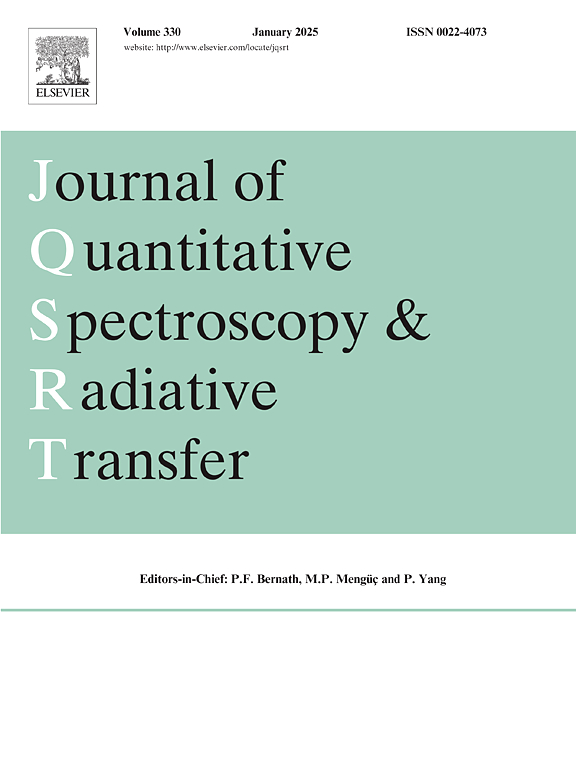Intensities of all fine-structure resolved rovibrational electric quadrupole absorption lines in 16O2 (X3Σg−) calculated with a new ab initio quadrupole moment curve
IF 2.3
3区 物理与天体物理
Q2 OPTICS
Journal of Quantitative Spectroscopy & Radiative Transfer
Pub Date : 2025-02-23
DOI:10.1016/j.jqsrt.2025.109395
引用次数: 0
Abstract
The intensities of all rovibrational electric quadrupole absorption lines in 16O (), for which the vibrational quantum number is and the total angular momentum quantum number is , are calculated in the intermediate coupling using a new ab initio quadrupole moment curve of the ground electronic state of O. The calculated values agree with those available in the HITRAN database, which at present includes, for quadrupole transitions, only the 1-0 fundamental vibrational band of 16O (). We therefore recommend using the intensities of the vibrational overtones and hot bands reported here in updating the HITRAN database for O in the upcoming 2024 edition.
求助全文
约1分钟内获得全文
求助全文
来源期刊
CiteScore
5.30
自引率
21.70%
发文量
273
审稿时长
58 days
期刊介绍:
Papers with the following subject areas are suitable for publication in the Journal of Quantitative Spectroscopy and Radiative Transfer:
- Theoretical and experimental aspects of the spectra of atoms, molecules, ions, and plasmas.
- Spectral lineshape studies including models and computational algorithms.
- Atmospheric spectroscopy.
- Theoretical and experimental aspects of light scattering.
- Application of light scattering in particle characterization and remote sensing.
- Application of light scattering in biological sciences and medicine.
- Radiative transfer in absorbing, emitting, and scattering media.
- Radiative transfer in stochastic media.

 求助内容:
求助内容: 应助结果提醒方式:
应助结果提醒方式:


